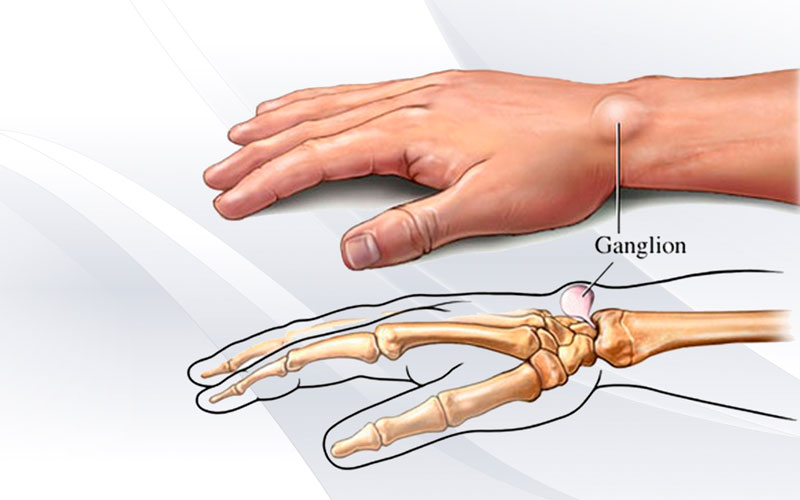A ganglion cyst is a rubbery, fluid-filled cyst that can affect on wrist or hand, shoulder and the foot. They are usually common in women in their 30s or 40s and tend to grow on at base of finger or top of a finger joint. But the mystery here is, what actually causes them? Well, sometimes trauma or injury is often involved.
The thick liquid inside a ganglionic cyst is similar to synovial fluid that lubricates joints or tenders. The fluid inside them leaks out through a break in the tissue above a tendon or a joint. They start as minor bumps that balloons up later into swellings ranging from the size of a pea to a golf ball.
They are considered harmless as they don’t spread and aren’t contagious. However, they can interfere with the normal movements and can be painful as well, especially when doing repetitive movements like typing.
The ganglion cysts tend to wane and wax in size as the fluid inside them refills or drains. Although, many create a non-return value and prevents the fluid from draining back to the body. Therefore, some cysts tend to disappear themselves, but the ones with persistent pain do require treatment.
The old remedy (which probably everybody knows) is to bash the cyst with heavy object like a book or something. This ruptures the ganglion cyst by releasing the fluid and easing the pain. Bursting the ganglion cyst is also thought to help to prevent it returning.

Recurrence is the only disadvantage in aspiration, the most common suggested treatment. This treatment involves sticking a needle into the cyst and sucking out the fluid. It is reasonably successful for pain relief. However, the reason for recurrence in this treatment is due to the fluid that sometimes are too thick to be removed completely, which leaves the cyst wall intact and allows for regrowth.
Although, the surgeons claim that the recurrence is reducible by injecting steroids into the cyst after the aspiration treatment. However, these drugs come with their own other set of problems.
The other conventional treatment is cyst removal surgery. You may think that it’s a minor operation, but it can actually be quite complicating. In this treatment, the surgeon not only removes the cyst, but also removes underlying tissue. This method is bit tricky initially to the important parts of wrist or hand.
After the surgery, it is not necessary that the matter ends. It has around 10% of reoccur cases. And, it takes probably 6 weeks to recover from the treatment.
So what are the alternatives? Well, one way is to watchfully waiting (just keeping eye on it and doing nothing) generally works. If it’s too painful, you could use natural painkillers like transcutaneous electrical neural stimulation, which sends high frequency and weak electric current to nerves. Other way includes enzymes like bromelain.
Other than these two ways, another way to relieve pain and decrease the swelling is to apply ice on it for few days. This also helps to relieve pain and reduce the size of cyst.
Final thoughts: If you’re not relieved by the above remedies, homeopathy can also be helpful in reducing size of cyst and it allows the cyst fluid to be reabsorbed by the body. And, the results of homeopathy is said to be more lasting and many times permanent, but this statement is only supported by the anecdotal evidence.



